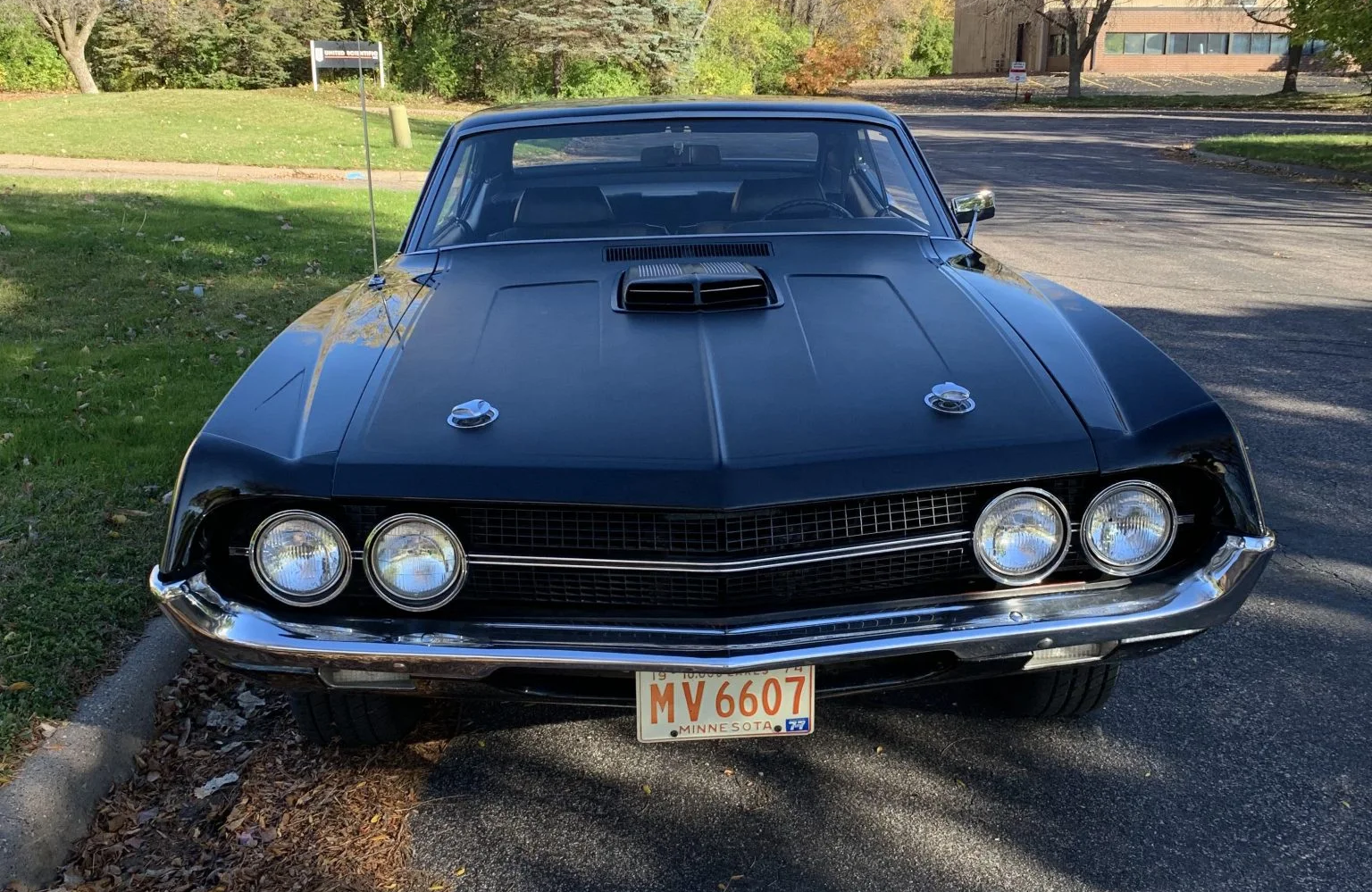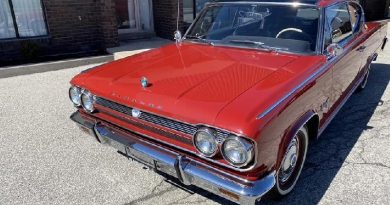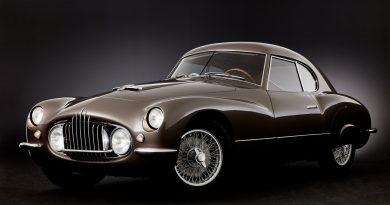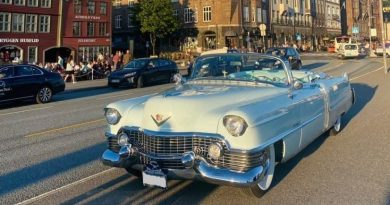1970 Ford Torino Cobra 429 Super Cobra Jet
The Ford Torino is an automobile that was produced by Ford for the North American market between 1968 and 1976. It was a competitor in the intermediate market segment. The car was named after the city of Turin (Torino, in Italian), considered “the Italian Detroit”. The Torino was initially an upscale variation of the intermediate sized Ford Fairlane with a similar approach to the Ford LTD being the upscale version of the Ford Galaxie, which was introduced at the same time. After 1968, the Fairlane name was retained for the base models with lower levels of trim than those models which wore the Torino name. During this time, the Torino was considered a subseries to the Fairlane. By 1970 Torino had become the primary name for Ford’s intermediate, and the Fairlane was now a subseries of the Torino. In 1971 the Fairlane name was dropped altogether, and all Ford intermediates were called Torino. This name was one of several originally proposed for the Mustang while in development. The Torino was essentially a twin to the Mercury Montego line.
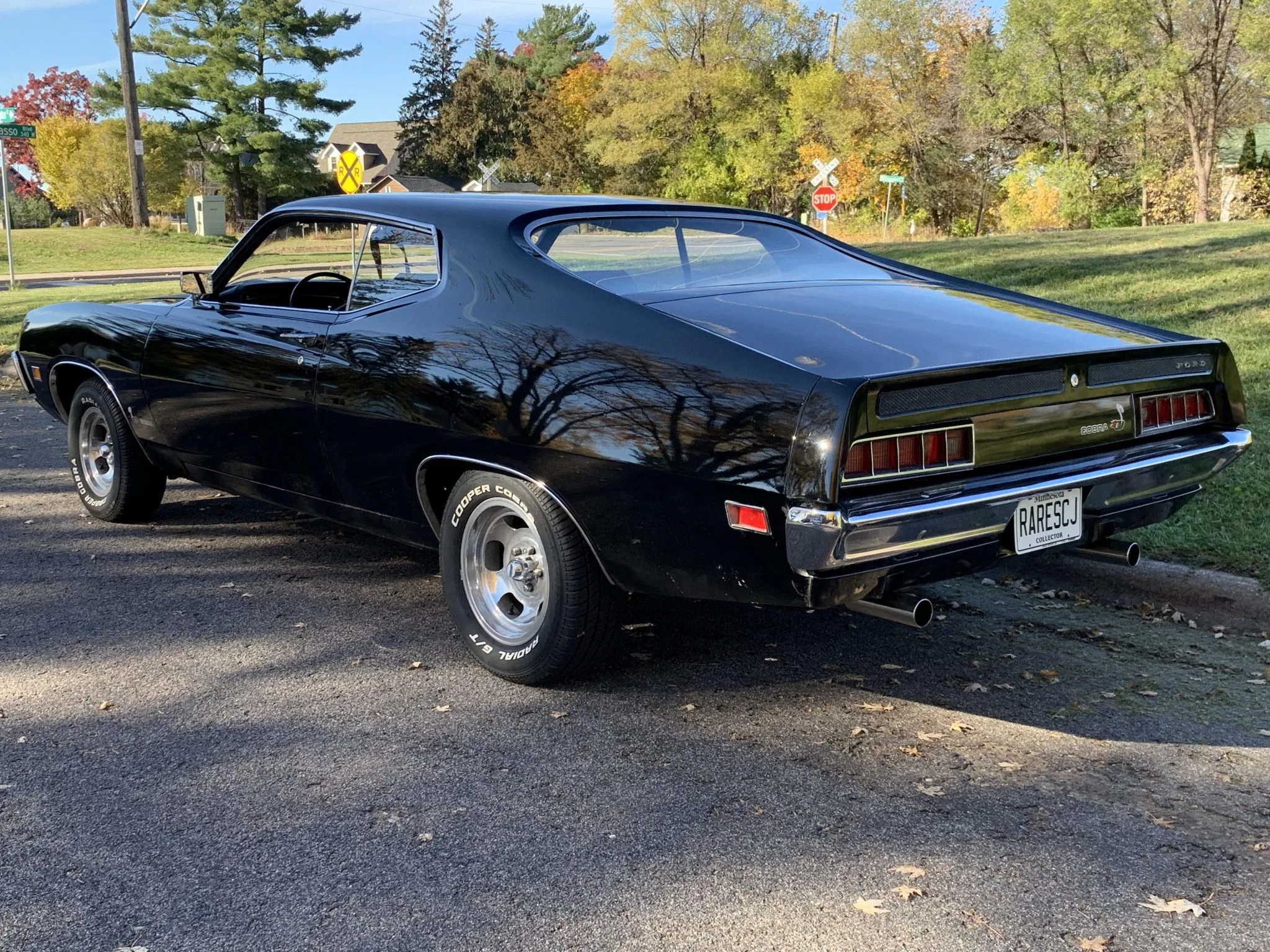
By 1970, Ford had moved away from emulating the boxy lines of their full-sized Fords. A completely new body for the 1970 Ford Torino was born. This new model was influenced by the “Coke bottle style”. Ford’s design stylist was influenced by supersonic aircraft to produce this style. The 1970 model Torino was longer, wider, and lower than the 1969 version.
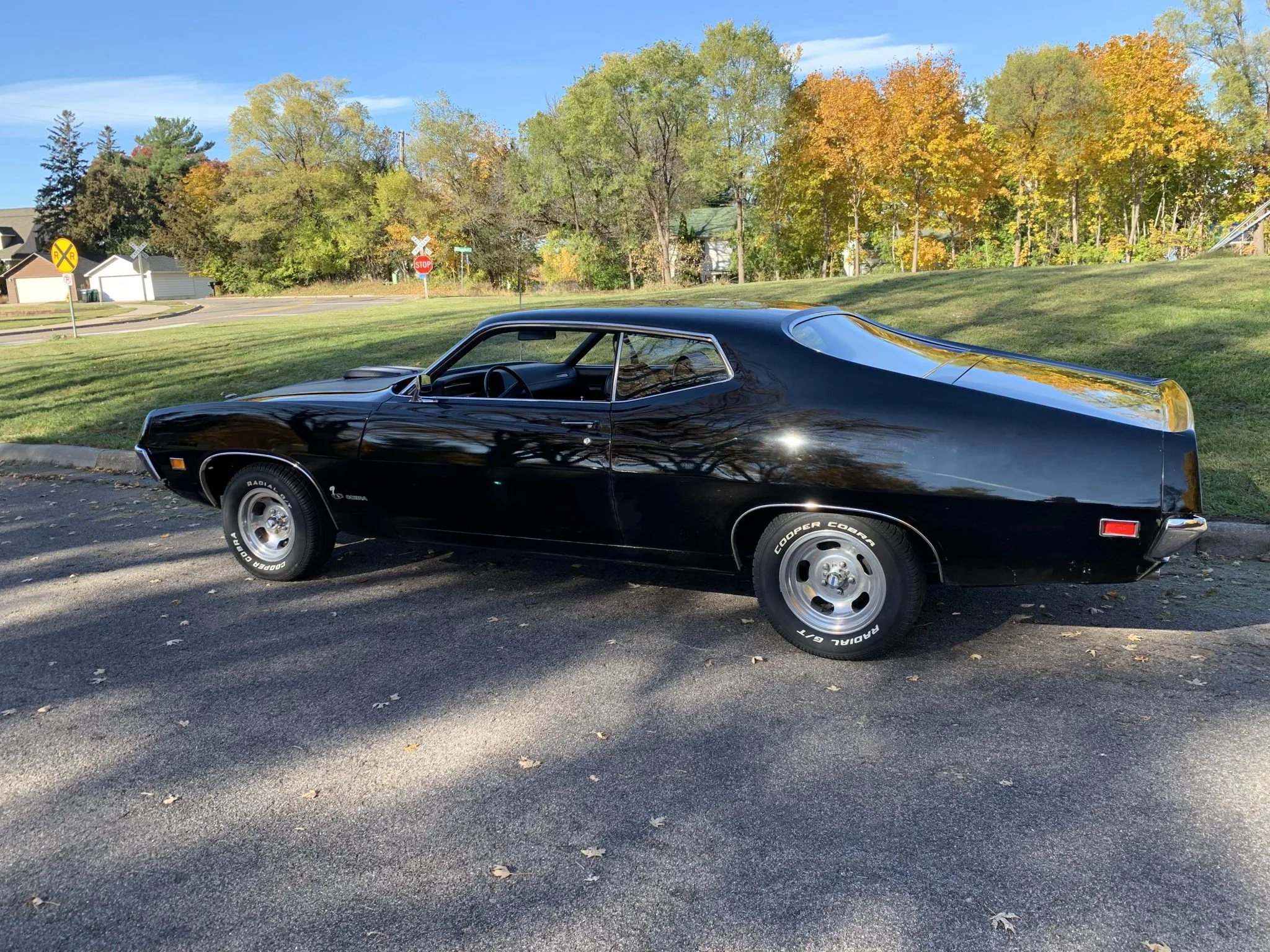
The performance 1970 Ford Torino became more deadly in 429 Cobra guise. Owners would get all the goodies mentioned above, plus the 429 Cobra Jet (code C) engine that featured new cylinder heads, enlarged intake and exhaust valves, a higher compression ratio, and a 700-cfm Rochester Quadrajet four-barrel carb bolted atop a redesigned intake. On paper, these modifications increased the output by 10 hp, but on the dyno, the engine could produce close to 400 horses. This is a code J version of this engine that came with a cold-air intake scoop that protruded through a dedicated hood.
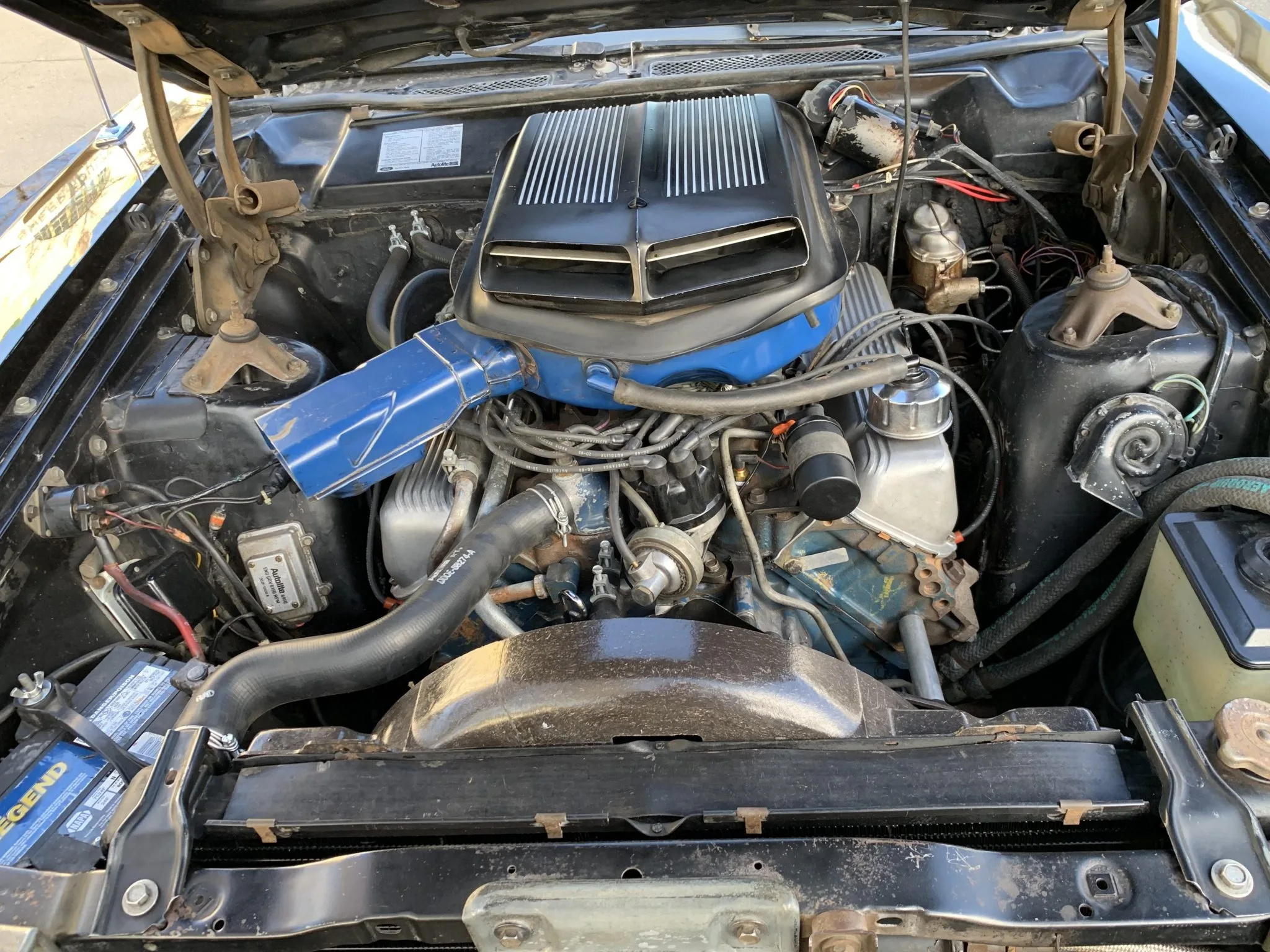
The interior features bench seats upholstered in black vinyl with patterned cloth inserts and a matching dashboard, door trim panels, and carpeting. Equipment includes a heater/defroster, a Hurst T-handle shifter, a push-button AM radio, polished door sills, Cobra badging, and lap belts for all occupants. The driver’s seat seam is separating. The two-spoke steering wheel frames a 120-mph speedometer and readouts for fuel level and coolant temperature. Dual auxiliary gauges are mounted below the center stack.
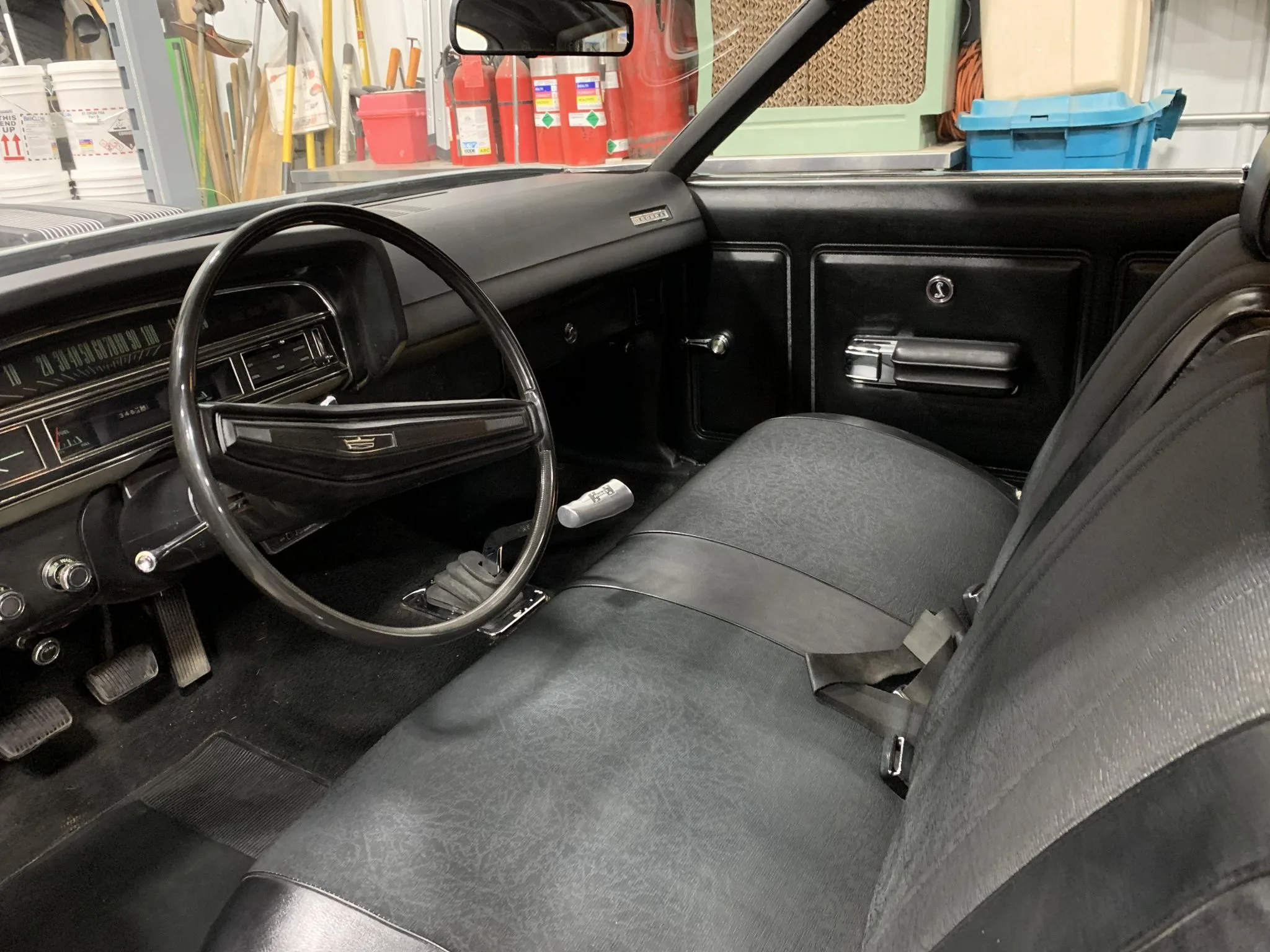
The Torino, though, stood out, especially the high-performing GT and Cobra versions. Even among that sea of Ford intermediates, Torino garnered enough attention that it was awarded the Motor Trend Car of the Year award for 1970.
